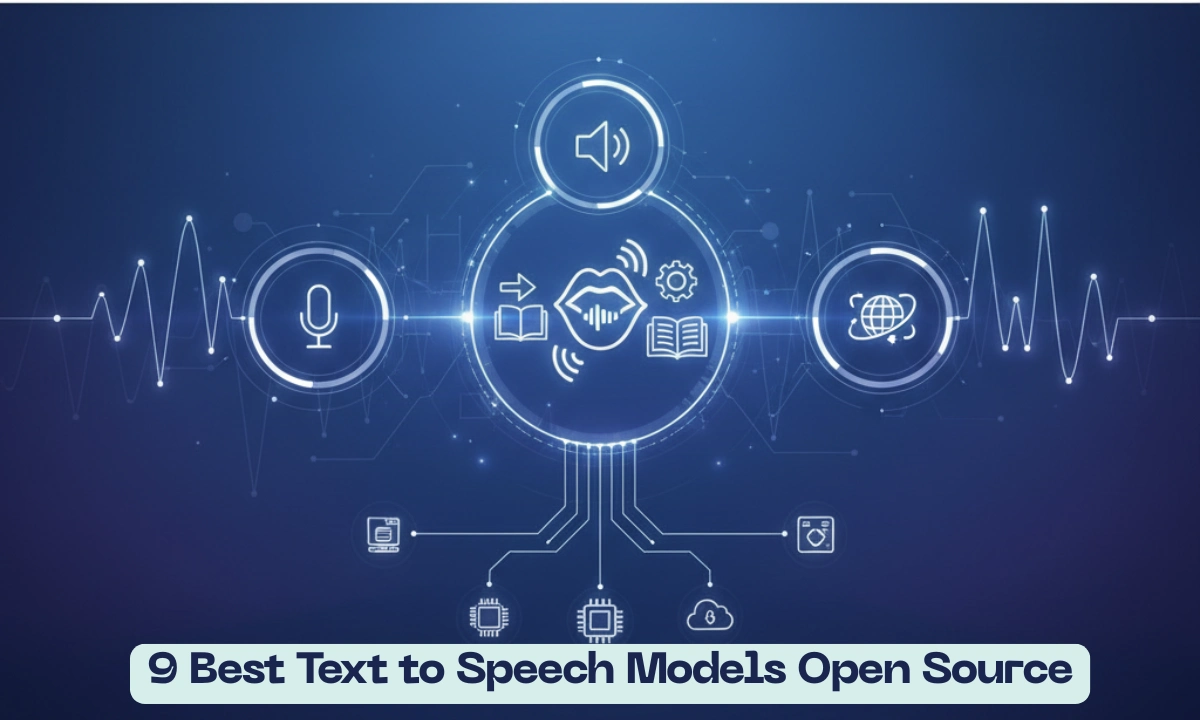Best Open Source Text to Speech Models You Can Use in 2026
Text-to-speech (TTS) tools have come a long way — from robotic voices to natural, expressive narration that sounds almost human. Today, creators, developers, and startups can easily use open source text to speech models to build apps, audiobooks, or virtual assistants without paying high licensing fees.
If you’re looking for realistic AI voices that are free to use and customizable, this list covers some of the top open source TTS models available right now — including what makes each one special.
1. VibeVoice — Long-Form AI Conversation Made Simple
VibeVoice is one of the most advanced open source TTS models for natural, multi-speaker conversations. It can create podcast-style audio with smooth turn-taking between voices.
The model uses a large language system paired with acoustic tokenizers, so the result feels like real people having a discussion rather than stitched-together clips.
You can generate up to 90 minutes of speech with up to four different speakers — perfect for long-form podcasts or storytelling.
2. Orpheus — Real-Time Emotional Speech
Orpheus focuses on emotional delivery and clarity. It’s built for real-time streaming, so developers can use it in chatbots, interactive games, or live narration apps.
The voice quality is warm and natural, and you can try it directly on platforms like Hugging Face, DeepInfra, and Replicate.
It’s completely open source, so you can fine-tune or train new voices for your project.
3. Kokoro — Fast, Lightweight, and Developer-Friendly
If you want speed and efficiency, Kokoro is an excellent choice. With just 82 million parameters, it delivers surprisingly high-quality audio while running smoothly even on small systems.
It supports Python and JavaScript (via npm), so developers can integrate it easily into apps or web projects.
Kokoro is also licensed under Apache, meaning you can use it freely for both personal and commercial work.
4. OpenAudio S1 — Multilingual and Emotion-Rich Speech
OpenAudio S1 is a massive multilingual model trained on millions of hours of real speech. It can speak dozens of languages while adding expressive tones — excitement, sadness, whispering, or even laughter.
This makes it ideal for creators who want cinematic or emotional AI voiceovers for global audiences.
5. XTTS-v2 — Zero-Shot Voice Cloning
Imagine cloning a voice from just six seconds of audio — that’s what XTTS-v2 can do.
It supports cross-language cloning, meaning you can take a speaker’s voice and make them speak naturally in another language.
The model comes from the same team behind Coqui Studio, one of the best-known TTS platforms, and is fully open source for research and production.
6. Dia — Realistic Dialogue Generation
Dia, created by Nari Labs, is a TTS model that focuses on generating real human dialogue directly from text scripts.
It can include small details like laughter, sighs, or pauses, making the audio sound far more authentic.
Currently, it supports English, with more languages expected soon. You can test or download it on Hugging Face.
7. CSM — Conversational Speech Model
Developed by Sesame, CSM combines a Llama-based architecture with an audio decoder to create natural-sounding conversations.
It’s a great option for interactive AI agents or storytelling apps.
There’s even a live demo on Hugging Face so you can hear how real the voices sound.
8. Chatterbox — Open Source with 20+ Languages
Chatterbox from Resemble AI is one of the most complete open source text to speech models out there.
It supports more than 20 languages, including English, Hindi, Japanese, and Arabic — all with emotional tone control.
Developers can adjust how expressive the voice sounds, from calm to excited. It’s also optimized for fast response, under 200 milliseconds — ideal for chatbots and AI assistants.
9. Bark — Text-to-Audio Beyond Speech
Bark, built by Suno, goes beyond simple speech. It can generate music, background sounds, and effects along with realistic human voices.
It’s perfect for creative projects like audio stories, games, or experimental media.
The model is open to researchers and available for testing through GitHub and Hugging Face.
Why Choose Open Source Text to Speech Models?
Open source TTS models give you full control and freedom:
-
✅ No subscription costs
-
✅ Easy customization and fine-tuning
-
✅ Support for multiple languages and emotions
-
✅ Integration with APIs and web apps
Whether you’re building a YouTube narration tool, an accessibility app, or a digital assistant, these models let you create natural voices that fit your brand — all for free.
Final Thoughts
The world of open source text to speech models is growing fast. Tools like VibeVoice, Kokoro, XTTS-v2, and Chatterbox are proving that you don’t need expensive licenses to achieve studio-quality results.
In 2025, open source TTS isn’t just a research topic — it’s powering real apps, games, and podcasts worldwide.
If you’re a developer or creator, this is the perfect time to explore these models and bring your text to life with AI voices that sound truly human.










